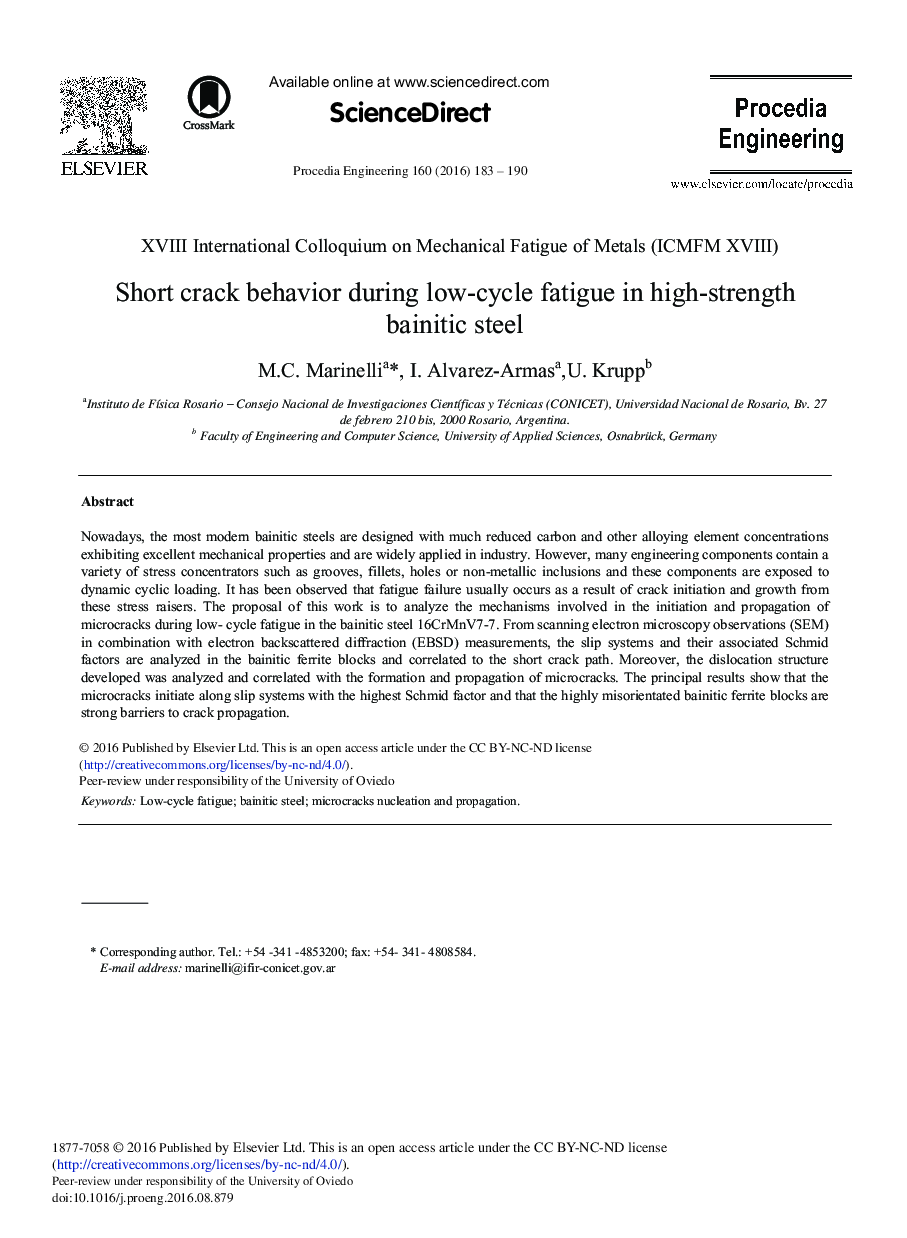| Article ID | Journal | Published Year | Pages | File Type |
|---|---|---|---|---|
| 5029429 | Procedia Engineering | 2016 | 8 Pages |
Nowadays, the most modern bainitic steels are designed with much reduced carbon and other alloying element concentrations exhibiting excellent mechanical properties and are widely applied in industry. However, many engineering components contain a variety of stress concentrators such as grooves, fillets, holes or non-metallic inclusions and these components are exposed to dynamic cyclic loading. It has been observed that fatigue failure usually occurs as a result of crack initiation and growth from these stress raisers. The proposal of this work is to analyze the mechanisms involved in the initiation and propagation of microcracks during low- cycle fatigue in the bainitic steel 16CrMnV7-7. From scanning electron microscopy observations (SEM) in combination with electron backscattered diffraction (EBSD) measurements, the slip systems and their associated Schmid factors are analyzed in the bainitic ferrite blocks and correlated to the short crack path. Moreover, the dislocation structure developed was analyzed and correlated with the formation and propagation of microcracks. The principal results show that the microcracks initiate along slip systems with the highest Schmid factor and that the highly misorientated bainitic ferrite blocks are strong barriers to crack propagation.
